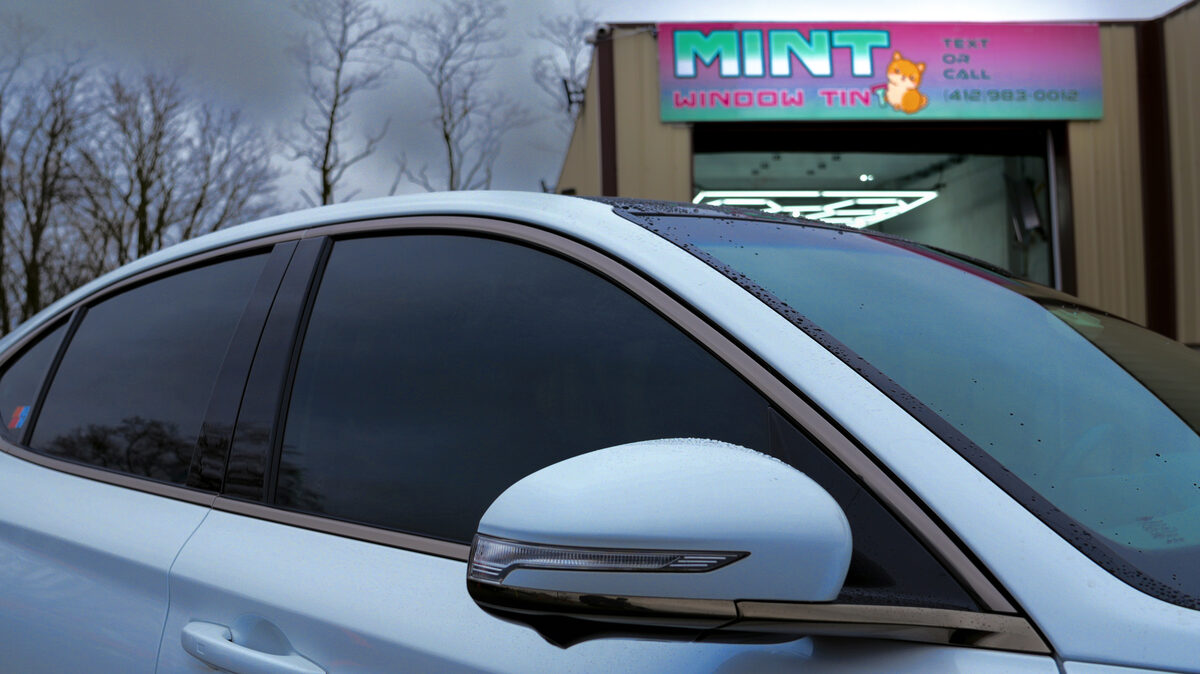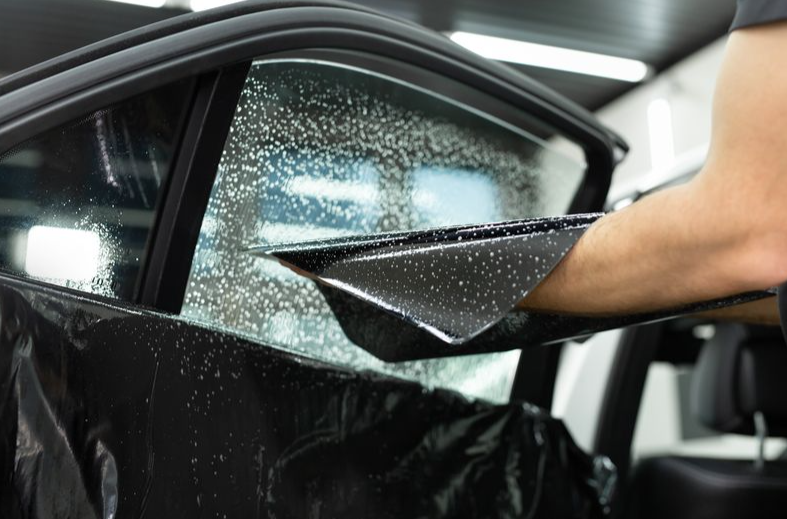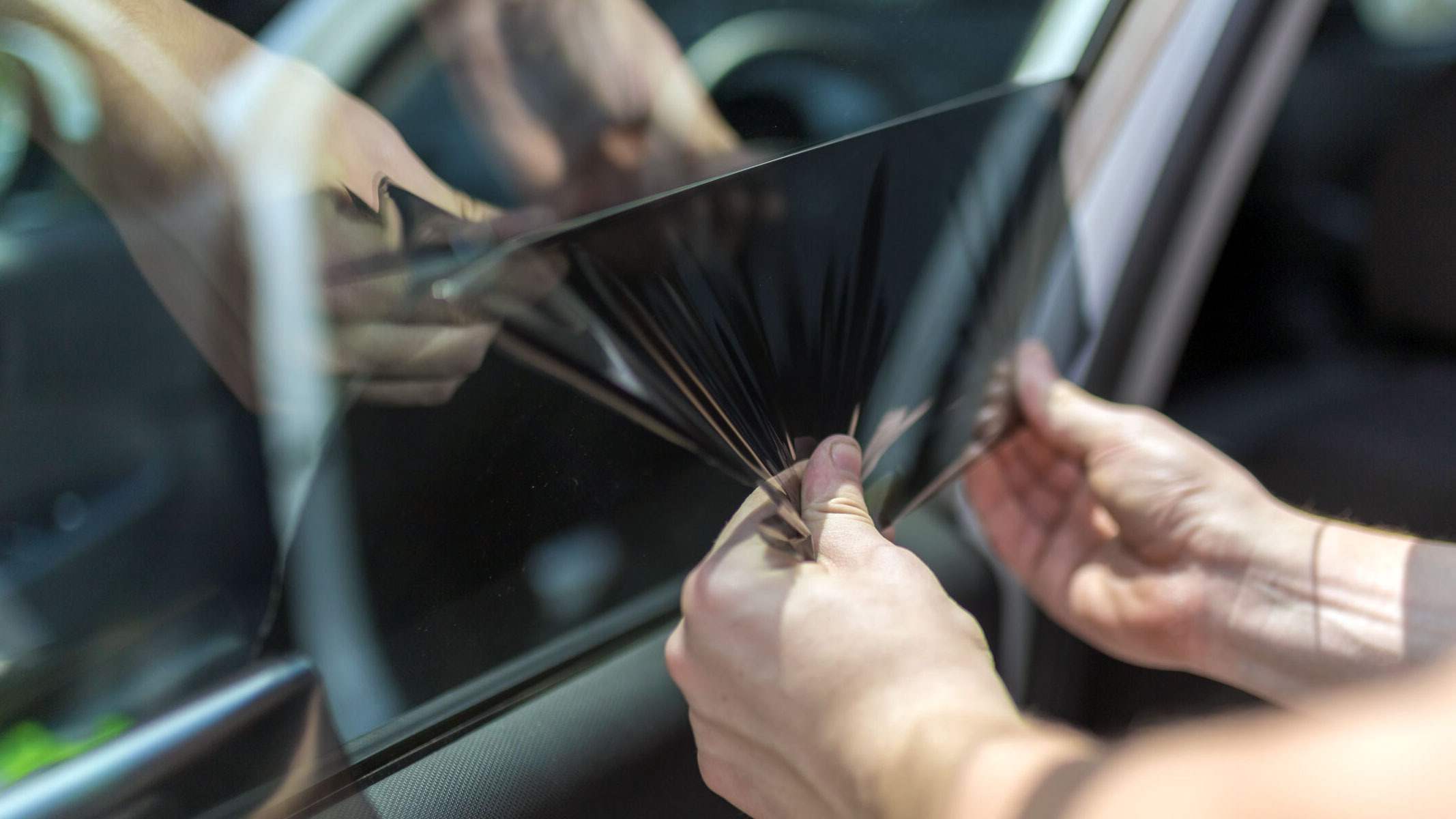A Comprehensive Guide to Understanding Vehicle Home Window Color and Its Benefits
Auto home window tinting offers more than just a visual purpose for lorries. It supplies numerous kinds, each with unique functions and advantages. Understanding these options, in addition to lawful laws and maintenance tips, is important for any vehicle proprietor. The advantages may substantially enhance driving comfort and car longevity. As one explores the subtleties of home window tinting, the inquiry occurs: what kind of tint is best matched for individual demands?
Recognizing Automobile Window Color: What It Is and How It Works
Auto home window color offers as a safety barrier that improves car visual appeals while supplying useful advantages. This thin movie is put on the indoor surface area of auto windows, minimizing glare and obstructing dangerous ultraviolet (UV) rays from the sun. By filtering system sunlight, car home window tint aids to control the interior temperature level of the car, leading to boosted comfort for passengers and lowered reliance on air conditioning.Additionally, it safeguards the car's interior from fading, protecting both upholstery and dashboard products. The color can also improve personal privacy, making it much more tough for outsiders to see inside the automobile. Specific kinds of window tint can boost safety; in the event of a crash, the film helps hold destroyed glass together, reducing the risk of injury from flying fragments. In general, automobile home window color offers both visual and useful purposes, making it a prominent option amongst lorry proprietors.
Types of Window Color: A Summary of Options
When taking into consideration window tint options, numerous types are offered, each with unique features. Colored, metalized, and ceramic home window colors use varying levels of heat rejection, UV security, and visual appeal. Comprehending these distinctions can assist automobile owners make notified choices based on their needs and preferences.
Dyed Home Window Color
Colored home window color represents a prominent selection amongst car owners seeking a economical and efficient method to boost their lorry's aesthetic appeals and privacy. This kind of color is created by placing a layer of color between an adhesive layer and a protective layer, resulting in a dark look that minimizes glare and enhances visual convenience. While dyed window tint effectively blocks hazardous UV rays, it may not provide the very same level of warmth rejection as various other color types. Additionally, its color can discolor with time, possibly diminishing its effectiveness. In spite of these downsides, dyed window color stays preferred for its cost-effectiveness and ability to provide a streamlined, stylish seek to numerous vehicle versions.
Metalized Window Tint
Metalized home window color offers a balance of design and functionality, making it a preferred option amongst auto proprietors. This kind of color integrates metallic particles within the movie, improving both aesthetic charm and heat rejection. The reflective high quality of metalized color aids to lower glare and improve privacy, while likewise supplying UV defense, which safeguards the automobile's interior. Furthermore, metalized home window tint can strengthen home window strength, possibly preventing shattering during mishaps. Nevertheless, it is very important to note that the metallic elements can disrupt electronic signals, such as GPS and mobile phone reception. Generally, metalized window tint offers a reliable solution for those looking for a combination of sunlight, toughness, and look security for their automobiles.
Ceramic Window Tint
Ceramic home window color represents an advanced choice in the spectrum of automobile home window films, offering unique advantages over conventional tints. Unlike colored or metalized movies, ceramic tints make use of innovative ceramic bits, which efficiently reject warmth and UV rays without jeopardizing exposure. This innovation ensures that cars stay cooler, lowering dependence on cooling and enhancing gas effectiveness. Furthermore, ceramic home window tints are much less likely to hinder digital devices, such as general practitioner or mobile signals, making them a functional choice for modern-day vehicles. Furthermore, their longevity and scratch resistance add to a longer lifespan contrasted to various other kinds of colors. Overall, ceramic home window color offers premium performance, comfort, and security, making it a recommended option for discerning lorry proprietors.
Benefits of Auto Window Tint: Beyond Looks
While lots of people associate automobile window tint with boosted style, its benefits extend much beyond plain aesthetics. One significant benefit is heat decrease; home window color can block approximately 99% of dangerous UV rays, maintaining the indoor cooler and protecting upholstery from fading. This not just enhances convenience throughout heat but likewise lowers dependence on cooling, leading to enhanced gas efficiency.In enhancement, automobile home window tint provides an included layer of privacy and safety and security. Tinted windows make it challenging for outsiders to see inside the car, which can discourage theft and safeguard belongings. Furthermore, numerous colors strengthen the glass, decreasing the possibility of shattering in the event of an accident, therefore enhancing safety.In addition to these functional benefits, vehicle window tint can likewise add to glow reduction, improving presence for travelers and chauffeurs alike. This multifaceted method to comfort and security makes window color a beneficial investment for car proprietors.
Legal Considerations: Tinting Regulations by State
Prior to devoting to vehicle home window tint, lorry owners must browse an intricate landscape of tinting regulations that vary by state. Each state has specific regulations governing the acceptable levels of tint darkness and reflectivity for different windows, consisting of windshields, front side home windows, and back windows. These policies often consist of visible light transmission (VLT) portions, which determine just how much light can travel through the tinted glass.Some states allow darker colors on rear home windows while restricting front side and windscreen tints for safety and security reasons. In addition, specific states may need a certificate from the manufacturer to verify conformity with tinting laws. Breaching these guidelines can lead to penalties, obligatory Get More Information elimination of the color, or both. Subsequently, it is necessary for automobile proprietors to investigate their state's laws completely to assure legal conformity before mounting window tint. This diligence can conserve money and time over time.
Selecting the Right Color: Aspects to Take into consideration
When selecting the suitable window tint for an automobile, a number of crucial aspects enter play. Tint darkness levels, UV security scores, and compliance with legal regulations are important considerations to ensure both looks and capability - Car Glass Tinting. Assessing these elements will assist individuals make an informed decision that meets their requirements and sticks to regional legislations
Tint Darkness Levels
Selecting this the suitable tint darkness degree is important for achieving the wanted balance in between visual appeals and performance in vehicle window tinting. Different states have varying legal regulations regarding color darkness, which can affect the selection. Generally, colors are measured in percentages, with reduced portions indicating darker tones. Darker tints provide boosted privacy and a smooth look yet can lower visibility, particularly at night. Conversely, lighter tints keep a more open feeling, making certain adequate presence while still providing some heat and glow reduction. People ought to consider their driving habits, neighborhood regulations, and personal choices when deciding. Inevitably, the right color darkness level improves the car's look while making sure safety and security and compliance with legal standards.
UV Defense Score
Tint darkness degrees play a significant role in the overall efficiency of auto window tinting, but another vital aspect to examine is the UV defense score of the picked color. This score indicates the percentage of damaging ultraviolet rays that the tint can block. Top quality colors usually provide 99% or more UV security, securing passengers and the vehicle's inside from sunlight damages. Extended exposure to UV rays can lead to skin problems and fading of upholstery, making a high UV protection ranking crucial for health and wellness and longevity. When choosing home window color, customers ought to prioritize this score alongside darkness degrees to guarantee maximum comfort and safety while driving. Recognizing these elements help in making an educated decision when buying vehicle window tinting.
Lawful Regulations Conformity
Comprehending local lawful laws is vital for any individual taking into consideration auto window tinting. Each state or region has certain laws regulating the allowable degrees of tint darkness and reflectivity for different home windows. These guidelines frequently specify the visible light transmission portion, figuring out exactly how much light can go through the tinted glass. Non-compliance can bring about fines, compulsory removal of the tint, or problems during vehicle assessments. Additionally, some areas might have limitations on making use of specific tinting products, calling for consumers to choose products that satisfy security standards. It is vital for vehicle owners to investigate their neighborhood laws extensively prior to choosing home window tint to assure compliance and avoid prospective lawful issues.
Installment Process: do it yourself vs. Professional Services
Just how does one choose in between a DIY installation and employing specialist services for car home window tinting? The selection commonly rests on budget plan, experience, and preferred results. A do it yourself technique can be cost-efficient, allowing individuals to conserve on labor expenses. It needs a specific degree of ability and knowledge concerning the tinting process. Those who are careful and patient may find success with do it yourself sets available in the market.Conversely, professional services use expertise and high-grade products, guaranteeing a perfect finish. Specialists usually ensure their job, supplying tranquility of mind versus possible concerns such as gurgling or peeling. Additionally, they recognize with regional laws relating to tinting, which can be complex for the ordinary vehicle owner.Ultimately, the decision mirrors an equilibrium between cost, personal capability, and the anticipated quality of the tinting job. look at more info Each choice has its advantages, and the very best choice relies on specific conditions and choices.
Maintenance Tips: Keeping Your Color in Leading Condition
Preserving the appearance and performance of home window tint calls for regular focus and treatment, particularly in varying weather problems. To protect the tint, it is vital to prevent using unpleasant cleaning products, which can harm the film or scratch. Car Glass Tinting. Instead, soft microfiber cloths and mild, ammonia-free cleansers ought to be utilized for cleaning the tinted surfaces.Furthermore, it is a good idea to wait a minimum of thirty day after installment before cleansing the windows to permit the tint to fully adhere. Car parking in shaded locations or utilizing sunshades can help minimize the fading results of UV rays and extend the color's life-span. Normal examinations for bubbles, peeling, or discoloration are recommended, as very early discovery can help with fixings. Finally, avoiding extreme temperature level fluctuations, such as pressing hot home windows in winter, will aid maintain the tint's integrity and look over time
Frequently Asked Questions

For How Long Does Home Window Tint Typically Last on a Lorry?
Home window color commonly lasts in between five to 10 years, depending on elements such as high quality, application, and environmental conditions. Regular upkeep and appropriate treatment can prolong its lifespan, guaranteeing optimal efficiency and look over time.
Can Home Window Tinting Damages My Automobile's Original Glass?
Window tinting, when applied appropriately, does not damage a car's initial glass. Improper setup or low-quality materials may lead to issues like peeling off or bubbling, possibly affecting the glass's integrity over time.
Is Home Window Tinting Safe for All Types of Autos?

Will Home Window Tinting Gap My Vehicle Warranty?
The concern of whether window tinting spaces a car warranty frequently depends on the supplier's policies. Generally, if the tint does not damage the vehicle, warranties usually remain undamaged. Nonetheless, consulting the supplier is suggested.

Can I Remove Home Window Color Myself if Needed?
Removing window color oneself is possible, however it requires mindful interest to stay clear of damaging the glass. People ought to make use of proper devices and techniques to ensure an effective elimination without leaving sticky deposit or scrapes behind. While dyed home window tint successfully obstructs damaging UV rays, it may not provide the same level of warm denial as various other color kinds. Ceramic home window color stands for an innovative option in the spectrum of auto window films, providing distinctive advantages over standard colors. Prior to devoting to auto window tint, vehicle owners need to navigate a complex landscape of tinting guidelines that vary by state. These guidelines usually include visible light transmission (VLT) portions, which determine how much light can pass via the colored glass.Some states permit darker tints on back windows while restricting front side and windshield colors for safety and security factors. Tint darkness levels play a substantial role in the general efficiency of automobile home window tinting, however an additional vital variable to evaluate is the UV protection rating of the selected tint.